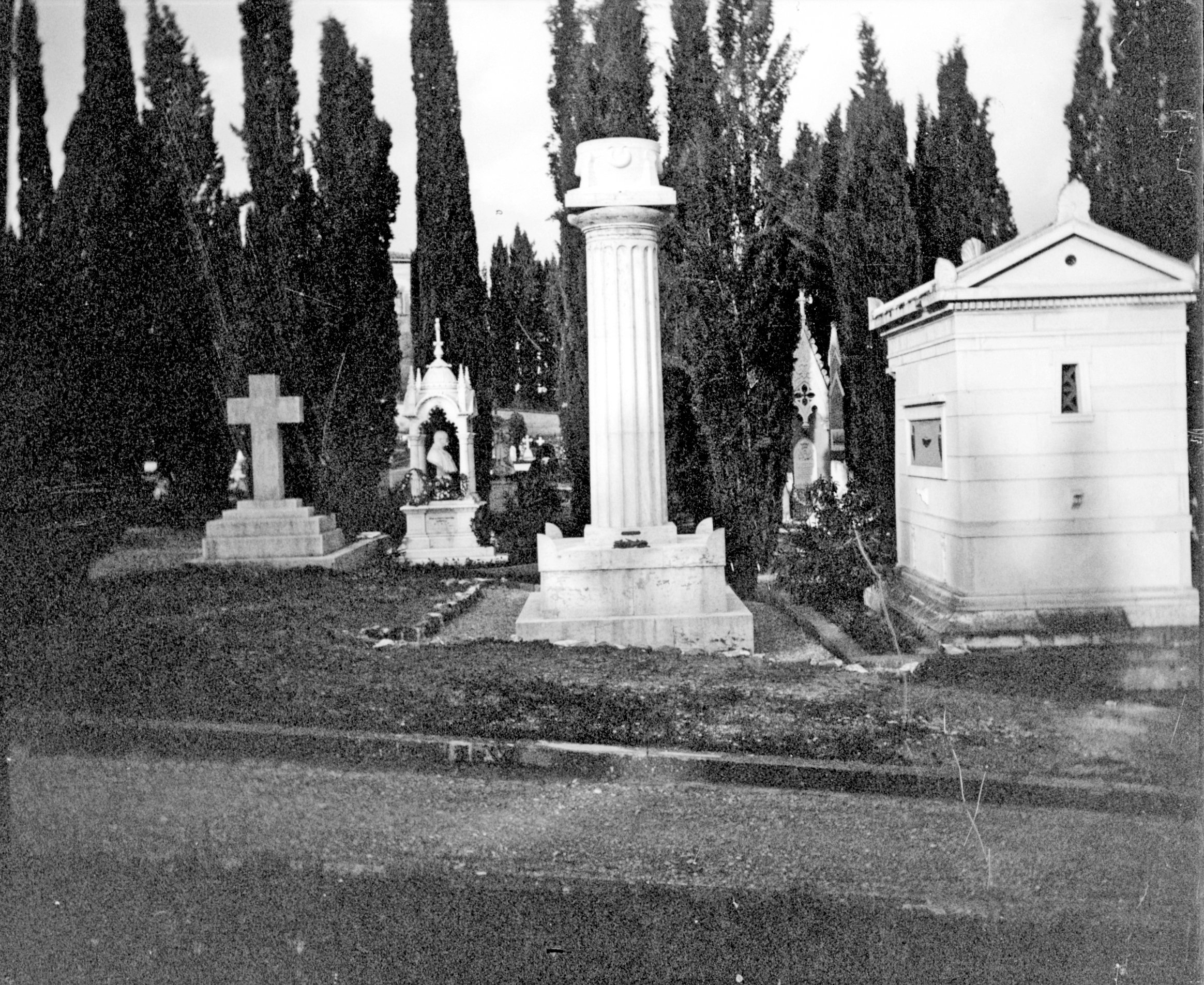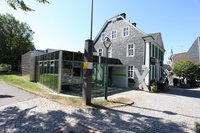Grab des Schweizer Malers Arnold Böcklin (*16.10.1827 in Basel; † 16.01.1901 in San Domenico bei Fiesole) auf dem evangelischen Friedhof Cimitero Evangelico agli Allori in Galluzzo bei Florenz. Das von der Rückseite aufgenommene Grabdenkmal besteht aus einer Säule, die auf der vom Fotografen abgewandten Seite die Inschrift „Non omnis moriar“: „Nicht ganz werde ich sterben – nicht Alles an mir stirbt“ aus einer Ode von Horaz trägt. Das Grabmal wurde von Böcklins Sohn Carlo entworfen.
en









